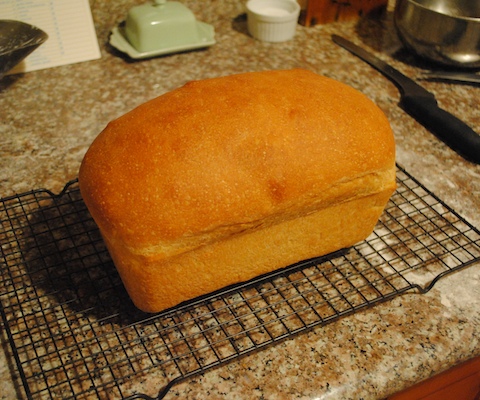Lesson 1: Your First Loaf — abreaducation
Your folders
Your folders
Author : Jorgen Carlsen

Ingredients
Export 6 ingredients for grocery delivery
Instructions
Step 1
Scale the salt and yeast into separate containers and set aside.Scale the water into the mixing bowl making sure it is the desired temperature. For this recipe use 76 degree water.Pour yeast into the water and stir. This ensures that all the yeast gets hydrated and active.Scale the honey and the oil directly into the yeast/water mixture.Scale the flour into the liquid mixture from previous step.Finally pour the salt on top of the flour. Adding the salt at this stage ensures it doesn't come into too close of contact with the yeast which could potentially inhibit its activity.You are now done with scaling and are ready to combine the ingredients into a dough!
Step 2
The dough should seem active. That is, it should feel a little gassy. It will be a bit lighter to the touch and not feel quite as dense as it did at the beginning of bulk fermentation. It should feel like the yeast is doing something. If the dough feels about the same as when the bulk fermentation started then you either haven't let it go long enough or something is wrong.The dough will gain volume. You don't want it to double in size but there should be a noticeable gain in volume. Somewhere around a 50% to 75% size increase.You should notice some air bubbles on the surface of the dough. This is a sign that the yeast is doing it's job.If you poke the dough it should spring back. If it doesn't spring back then you have gone too far and your loaves might not rise too well in the oven because the yeast have already exhausted their supply of food(sugars in the flour).
Step 3
First, proofing allows the yeast to fill the dough with gas. This is what gives our loaf volume and a soft crumb. If we didn't allow for the final proofing time then our loaf would be dense, heavy and it would lack volume.Proofing allows us to have a controlled rise when we bake the dough. If we didn't proof, there would be too much energy left in the dough when we bake it. This would result in a loaf that "explodes" in the oven. It would burst in ways that we don't want and can't control. One of the best ways to tell if you are under proofing your bread(not proofing long enough) is if it bursts in an extreme way or in spots you didn't intend it to. Proofing the bread properly results in controlled bursting.Proofing continues to develop flavor. While we are proofing the bread, fermentation is continuing to occur and is in turn makes our bread more flavorful. The effect is not quite as strong as in bulk fermentation when the dough is sitting in a larger mass but flavor IS being developed(Again, this is not relevant for us in this lesson because we are doing a single loaf batch size).
Step 4
The dough should have gained significant volume. Doubling or tripling in size is common.Feel the dough with your hand. Shake it slightly. Does it feel strong or weak? Does it feel like there is a lot of air in it? Does it feel like it can continue to proof without collapsing? The dough should feel quite airy and light. However, it should also feel like it has some strength left in it. If it feels like it is close to collapsing then you've gone too far. The dough should be proofed to around 80-90% of its capacity. You need to leave some energy left for the oven.Poke the dough lightly with a floured finger. Poke about half an inch into the dough. If the dough springs back quickly then it needs more time. If the dough springs back slowly then it is ready to bake. If it doesn't spring back at all then you've gone too far. Make sure when you do this test you poke is several different places in the dough. Sometimes the dough will spring back fast in some places and slowly or in others. You must check all around the dough to get an accurate assessment.